( – promoted by navajo)
One of the most intriguing archaeological sites in the United States was constructed nearly 4,000 years ago in Louisiana. At a place which is today called Poverty Point, Indian people constructed a series of large earthworks. These included a large mound, three smaller mounds, and a series of six interrelated concentric low ridges in the shape of an octagon. The ridges were about two meters (a little more than six feet) high and ranged from 17 to 50 meters wide. Some houses were built on the ridges. The site covers nearly 500 acres and was occupied by about 2,000 people.
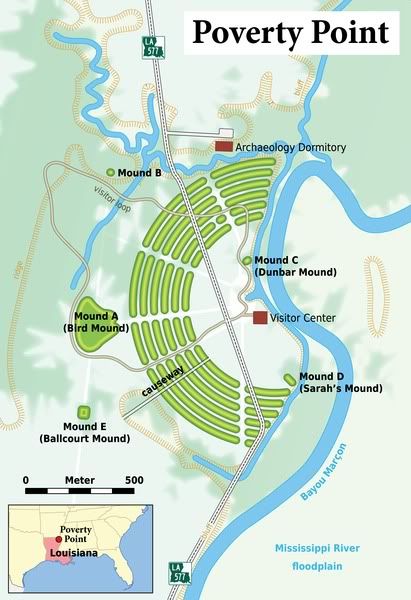
The largest mound at Poverty Point measures 710 by 640 feet, and stands 70 feet high. It looks like a bird with wings outspread.
Comparing Poverty Point with the well-known Stonehenge site in England, which was built at about the same time, we see that Stonehenge could be fitted seven times into the enclosure at Poverty Point.
The people of Poverty Point made exquisite animal effigies from argillite, slate, copper, galena, hematite, and steatite. The materials for some of these effigies were imported from sites 625 miles away.
With regard to long distance trade, the people at Poverty Point acquired minerals such as galena, quartz, and hematite from the Great Lakes, Ohio, and Tennessee, and obsidian from Yellowstone National Park. Soapstone bowls from the Soapstone Ridge area near present-day Atlanta, Georgia were transported to Poverty Point. They also acquired copper beads from Michigan, sharks’ teeth and shells from the Atlantic and Gulf coasts.
One of the most intriguing finds at Poverty Point are the clay figurines. These clay figurines have cleft heads similar to those on jade figures fashioned about the same time across the Gulf of Mexico by the Olmecs, who planned Middle America’s first extensive ceremonial centers.
The pottery at Poverty Point shows trade with Indian people in eastern Florida. They were also making some pottery locally.
The Indian people at Poverty Point made millions of small baked clay balls. These were less than 2 inches in diameter. These clay balls were used as boiling and baking stones. After being heated, they were dropped into pots of water to bring the water to a boil. At other times they were heaped over food in an earth oven.
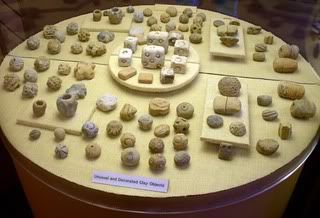
The mounds at Poverty Point appear to have had an astronomical use. Standing on a mound just west of the site’s rings, the sun rises over the town’s central plaza during the spring and fall equinoxes.
Archaeologists generally expect large, complex sites, such as Poverty Point, to be constructed by agricultural people, but Poverty Point predates agriculture in Louisiana. The Indian people who built these large, complex earthworks based their subsistence on hunting, gathering, and fishing.
About 3,000 years ago, the Indian people at Poverty Point stopped adding to the site and appear to have left the area.
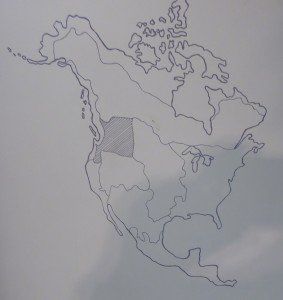
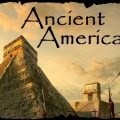
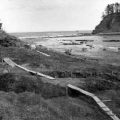
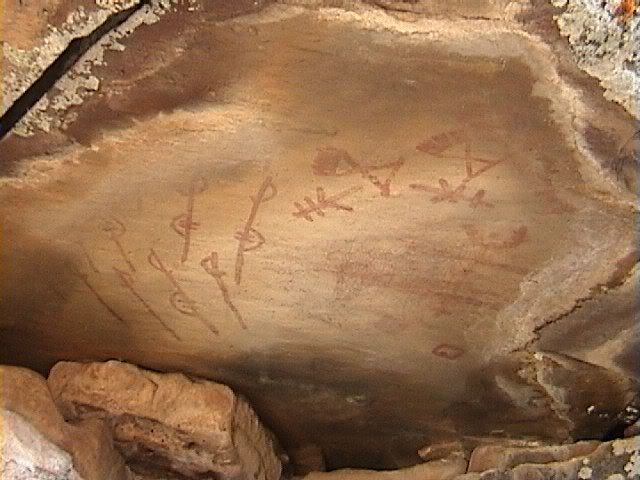
people could live richly , with a great deal of time for building or raiding other nearrby peoples for slaves to do the work of building mounds. The lower Mississippi Delta has been a place that could support people living that way until within my own lifetime.Change does come , but some things have such a beauty they should be protected from passing on. – deer seeker , crab eater.